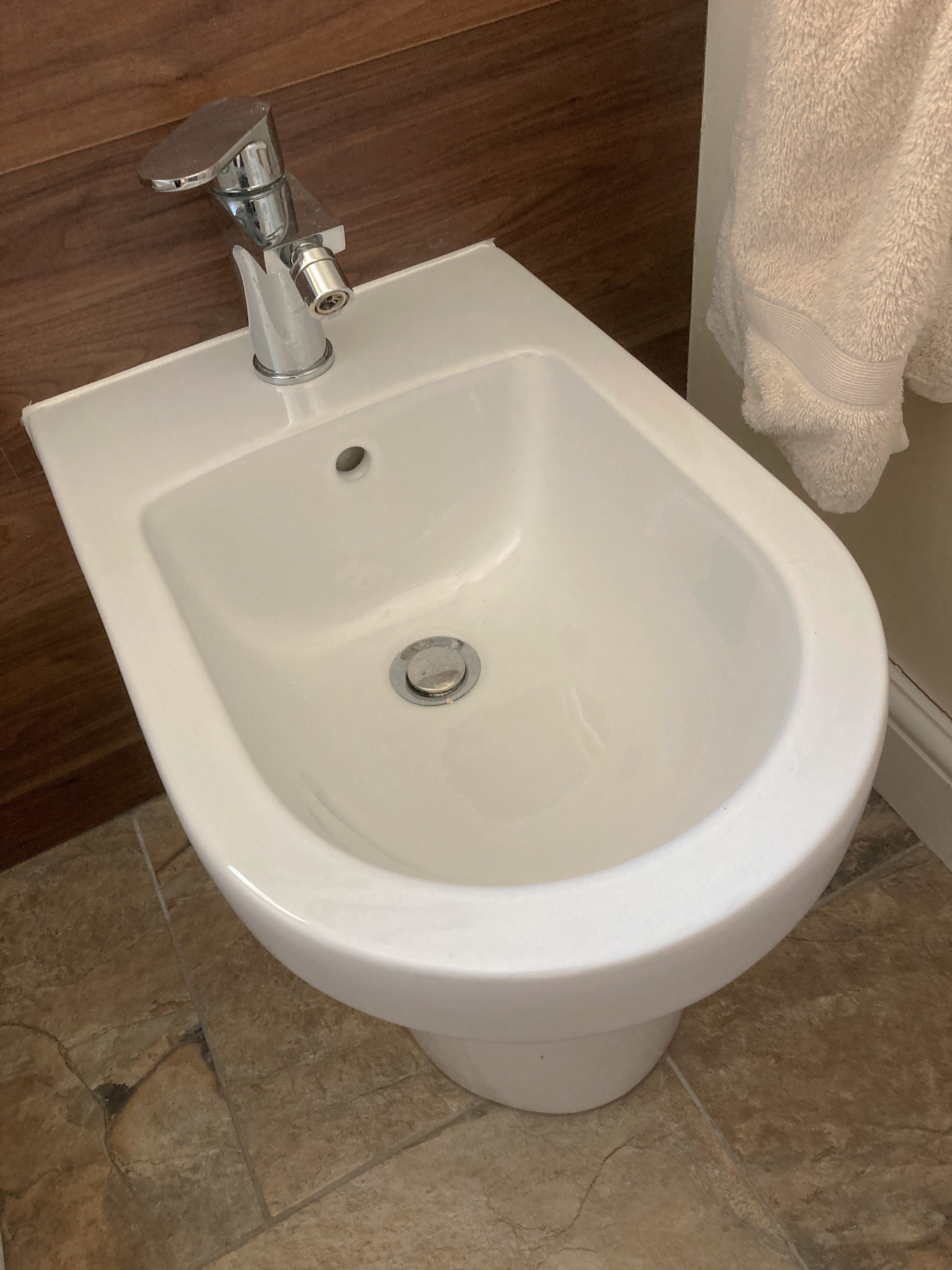Bidet
Contents |
[edit] Introduction
The Building Regulations Approved Document G: Sanitation, hot water safety and water efficiency suggests that the term ‘sanitary appliance’ means a ‘… WC, urinal, bath, shower, washbasin, sink, bidet and drinking fountain. It also includes appliances that are not connected to a water supply (e.g. composting toilet) or drain (e.g. waterless urinal).’
These appliances collect and remove water and other waste matter. They are generally grouped into two categories: soil appliances and wastewater appliances. A bidet (either pedestal or wall hung) is categorised as a soil appliance and is used for hygienic matters.
[edit] History
The word bidet comes from the French term for "little horse" - a reference to the position of a person who is using the device. It originated in 16th century France, although the specifics of its introduction are unknown.
It may have been used along with a chamber pot, both as a device for washing and a contraception aid. Until the 1900s, bidets were most often found in bedrooms, but when modern plumbing was introduced to the bathroom, bidets and chamber pots moved out of the bedroom.
[edit] Types of bidets
Bidet shower. This is also referred to as a bidet spray, bidet sprayer or health faucet. It is a separate handheld device with a trigger.
Conventional. This is a separate plumbing fixture that is generally installed near a toilet.
Add-on bidet. This is a device with a nozzle that is attached to a toilet bowl or toilet seat. It may also be referred to as a combined toilet, bidet attachment or combi toilet.
[edit] Cultural preferences
Bidets are commonly used in some parts of the world and are legally required in certain countries, including Portugal and Italy. They are also frequently found in other parts of the world, including Islamic countries, Africa, South America and Japan.
Japanese bidets sometimes include features such as seat warmers, dryers and so on, making them popular in other parts of the world (including Asia and the US). However, bidets are not commonly found in the UK or the US.
There is some debate over whether bidets are more hygienic than toilet paper alone. The sole use of a bidet can save a significant amount of paper. However, it is believed that a combination of the two provides the greatest hygienic benefit.
[edit] Related articles on Designing Buildings
Featured articles and news
The UK's Modern Industrial Strategy: A 10 year plan
Previous consultation criticism, current key elements and general support with some persisting reservations.
Building Safety Regulator reforms
New roles, new staff and a new fast track service pave the way for a single construction regulator.
Architectural Technologist CPDs and Communications
CIAT CPD… and how you can do it!
Cooling centres and cool spaces
Managing extreme heat in cities by directing the public to places for heat stress relief and water sources.
Winter gardens: A brief history and warm variations
Extending the season with glass in different forms and terms.
Restoring Great Yarmouth's Winter Gardens
Transforming one of the least sustainable constructions imaginable.
Construction Skills Mission Board launch sector drive
Newly formed government and industry collaboration set strategy for recruiting an additional 100,000 construction workers a year.
New Architects Code comes into effect in September 2025
ARB Architects Code of Conduct and Practice available with ongoing consultation regarding guidance.
Welsh Skills Body (Medr) launches ambitious plan
The new skills body brings together funding and regulation of tertiary education and research for the devolved nation.
Paul Gandy FCIOB announced as next CIOB President
Former Tilbury Douglas CEO takes helm.
UK Infrastructure: A 10 Year Strategy. In brief with reactions
With the National Infrastructure and Service Transformation Authority (NISTA).
Ebenezer Howard: inventor of the garden city. Book review.
The Grenfell Tower fire, eight years on
A time to pause and reflect as Dubai tower block fire reported just before anniversary.
Airtightness Topic Guide BSRIA TG 27/2025
Explaining the basics of airtightness, what it is, why it's important, when it's required and how it's carried out.
Construction contract awards hit lowest point of 2025
Plummeting for second consecutive month, intensifying concerns for housing and infrastructure goals.
Understanding Mental Health in the Built Environment 2025
Examining the state of mental health in construction, shedding light on levels of stress, anxiety and depression.






















